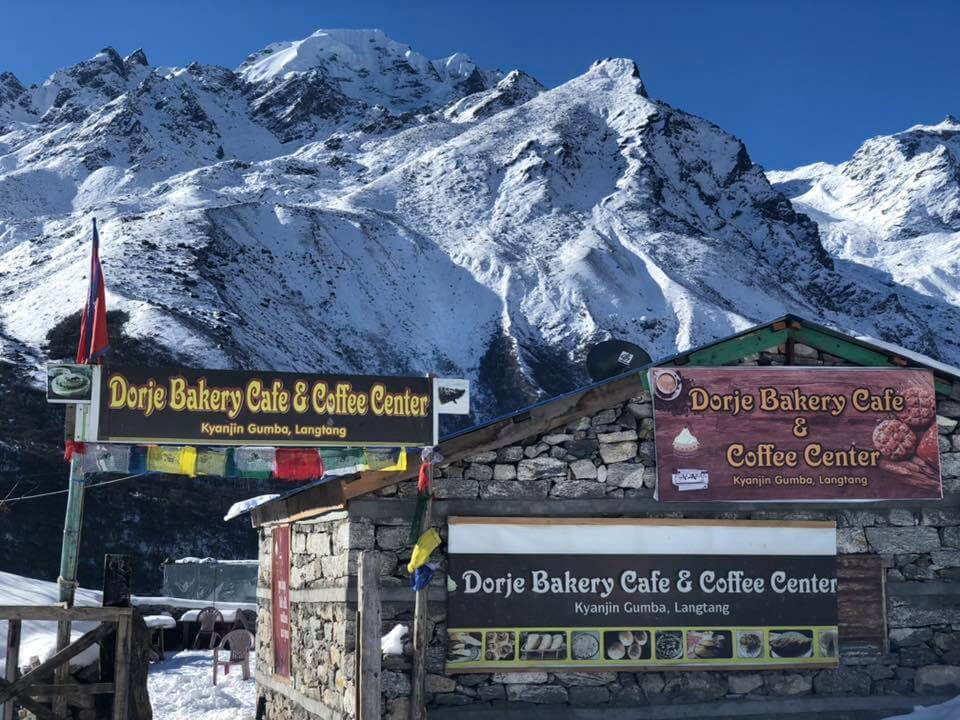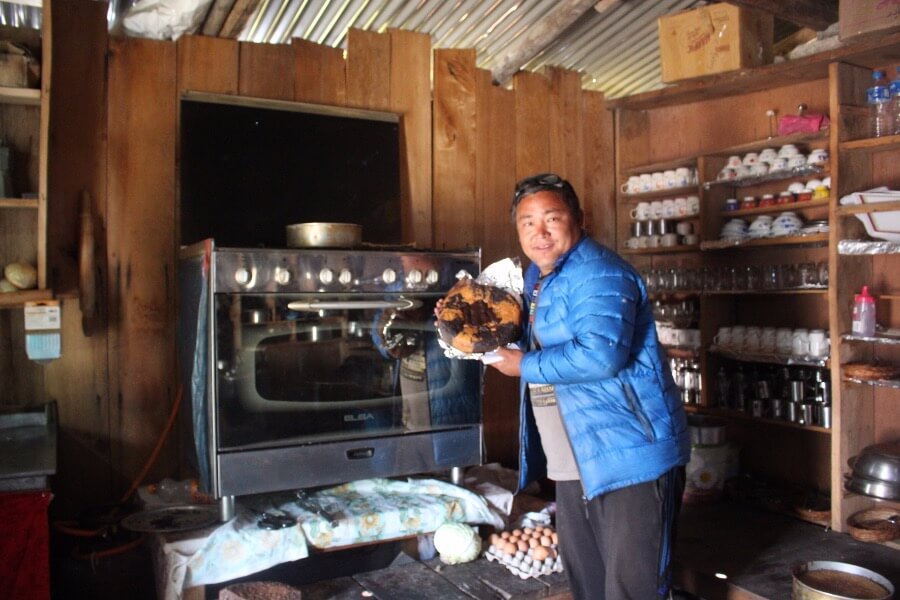Five years after avalanche, Langtang is locked down

Minutes before noon on 25 April 2015, the earth rattled and shook. But then another thunderous sound approached from above. A whole section of the icefield below the summit of Mt Langtang Lirung had been shaken loose by the quake, and it fell on the glacier, bulldozing it over a cliff to the village below.
Langtang was obliterated and buried. A shock wave preceded the avalanche and blew everything away to the other side of the valley where trees lay flattened as if hit by a nuclear explosion. Nearly 300 people were killed in the disaster, half of them Langtangpa.
The survivors were airlifted to the Yellow Gumba monastery in Kathmandu, and some of them got trekking guide and lodge management training at the Nepal Academy of Tourism and Hospitality Management and the women were trained in baking and making hand-knitted woolen products.
On the fifth anniversary of the disaster this week, Nepali Times caught up with some of the survivors of the disaster.
Lhakpa Tamang Jangba

I never thought I would be a baker. Once, when I was with my father in Kathmandu for his medical checkup, he said he wanted to start a bakery in Langtang. I bought him all the equipment, but a few days later he died. I wanted to turn his unfulfilled dream into reality and learnt to bake.
Initially, the internet recipes I relied on failed. A trekker in my lodge even said:This is the most horrible chocolate cake I have ever tasted. But I kept trying. Another guest helped me bake properly, and brew coffee.
When the earthquake hit, I was having coffee at the lodge. The guests ran out. Then I heard the roar of the avalanche coming down from Langtang Lirung. I saw my kitchen collapse in front of my eyes, and the hotel crumbled. We hid in a corner, and watched this huge cloud of snow and dust cover Kyanjing Gumba. It was hard to breathe.
The avalanche stopped, but rocks kept falling. People were crying. The helicopters finally came we evacuated injured tourists and neighbours. I was rescued on the fourth day, and when I met my family who was in Kathmandu, we held each other and cried. We had become homeless refugees in our own country.
But the young Langtangpa in Kathmandu started a reconstruction committee in a Swayambhu monastery where the head Lama gave us permission to stay as long as we needed. We focused on fundraising because we knew that the government’s Rs300,000 government grant would not go far.
It has been five years, and my Dorje Bakery Café and Coffee Center named after my late father has been rebuilt. We had revived tourism, and life was going back to normal when this virus happened. It has destroyed our livelihood once again. We do not know now this will end, but we survived the earthquake and we will overcome this crisis too. There will be more earthquakes and disasters, but future generations need to know how we did not give up hope even when everything was destroyed.
Tsering Choephel Lama
When the earthquake struck, I was living in Swayambhu. We spent a few nights in an empty field because of the aftershocks, but my mind was in Langtang. My village had been wiped off the map by a huge avalanche triggered by the earthquake. I was in shock.
After the Langtangpa were airlifted to Kathmandu we moved to the Yellow Gumba where I volunteered in the camp -- helping to keep it clean, cooking and taking care of those who had been injured. The Langtangpa were not used to the heat, and my fear was they would fall sick. We therefore tried to keep the camp as clean as possible.

Some of the volunteers advised me to go to the United States to study, and that is where I am now. Life in America is very different, I am now a biomedicine undergrad. At the moment school is closed because of the COVID-19, but I want to finish my studies and work in the medical field so I can be useful for my people in Langtang.

Tsering Jangbu Changnyempa
When the earthquake stuck, I was doing my +2 college in Kathmandu. My final board exam got shifted because of the earthquake, and I stayed at the shelter in Yellow Gumba.
I got my guide license during my stay at the monastery and enrolled in a Bachelor in Travel and Tourism Management. I worked with an organisation called Langtang 7221, and travelled to Italy to raise funds for Langtang and tell Italians about Nepal. Apart from several fundraising dinners, I also took a two week pizza-making course.
I opened Sunrise Guest House in Kyanjin Gumba in 2017, and I run the place during college break. Business was picking up when the coronavirus lockdown hit us. I think the last five years has turned me from a boy into a man. I have learnt and experienced a lot, and got to know the world better. I will keep moving ahead positively, be a decent person, and help my society and Nepal.

Kartok Lama
Five years after the earthquake, we had finally started a new life, tourism was gradually picking up again. We had planned to commemorate the 5th anniversary this week with blessings from His Holiness Kyabje Shechen Rabjam Rinpoche, but it had to be postponed due to COVID-19. We had great hopes for Visit Nepal 2020, but the lockdown has wrecked tourism once again in Langtang. This uncertainty has most of us deeply worried.
The village is not the same as before the earthquake, and will never be. But we have preserved our culture and some of us have gone back to farming, and livestock rearing for the cheese factory.

The oldest monastery in Langtang was destroyed by the earthquake, but it was rebuilt after two years with support from the Japanese, and two other shrines are being reconstructed. Restarting our new life in Langtang was difficult. The virus has made it tougher. But we did not lose hope then, and we will not lose hope now.




